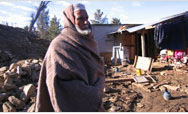You are here » Home » Telling Our Story
Success Story
Local governments have more control, resources available for their needs
Putting Health Care into People’s Hands

Photo: Richard Nyberg/USAID/Senegal
Village elders and community members in Koulouk Mbada play a pivotal role in planning for and financing their own health care.
“What we have learned from the [USAID] project is that the community should decide and act upon its priorities,” said Farba Lamine Sall, Cabinet Director, Senegal’s Ministry of Health.
More than one-third of Senegal’s population has seen improvements in community health care and infrastructure due to a multiyear USAID project.
For many Senegalese, getting basic health care is costly and time-consuming because either they have no health clinics near their homes or the clinics themselves lack equipment, medicine, and supplies. People walk long distances or pay for transportation by horse cart to reach a health facility. Consequently, women often skip pre-natal consultations and give birth at home, contributing to high maternal mortality. Children are not regularly immunized, and malaria (Senegal’s number one killer) goes untreated until it is too late.
USAID, in partnership with 2 Senegalese government ministries, sought to redress this situation. Its health care decentralization project has helped local governments, in collaboration with health officials and civil society, to prioritize, plan, and budget for activities they choose based on their most pressing health needs.
USAID has assisted 149 local governments in 22 health districts in the regions of Fatick, Kaolack, Louga, Thiès, and Ziguinchor. In total, 37% of Senegal’s population of 11 million benefited from this support.
One of the program’s innovative responses was a matching grant program, which has increased financial resources to fund the local health needs and reinforce participation of the population in securing its own health services. It helped mobilize $1.6 million from local taxes that the USAID project matched with $4.2 million to fund community health projects. This money has been used to train locally-elected health workers and members of local civil society in how best to manage their resources.
Through the USAID project, communities have built and equipped 277 health huts, and have rehabilitated and equipped 24 referral health centers, 138 health posts, and 162 health huts.
Print-friendly version of this page (533kb - PDF)
Click here for high-res photo
Back to Top ^ | 

